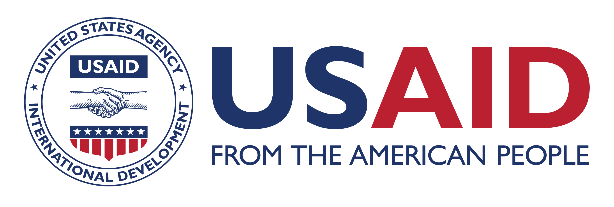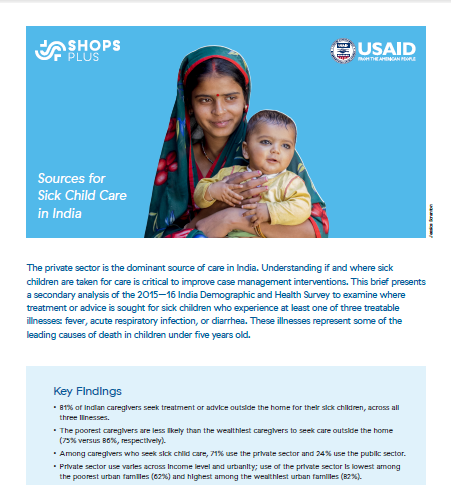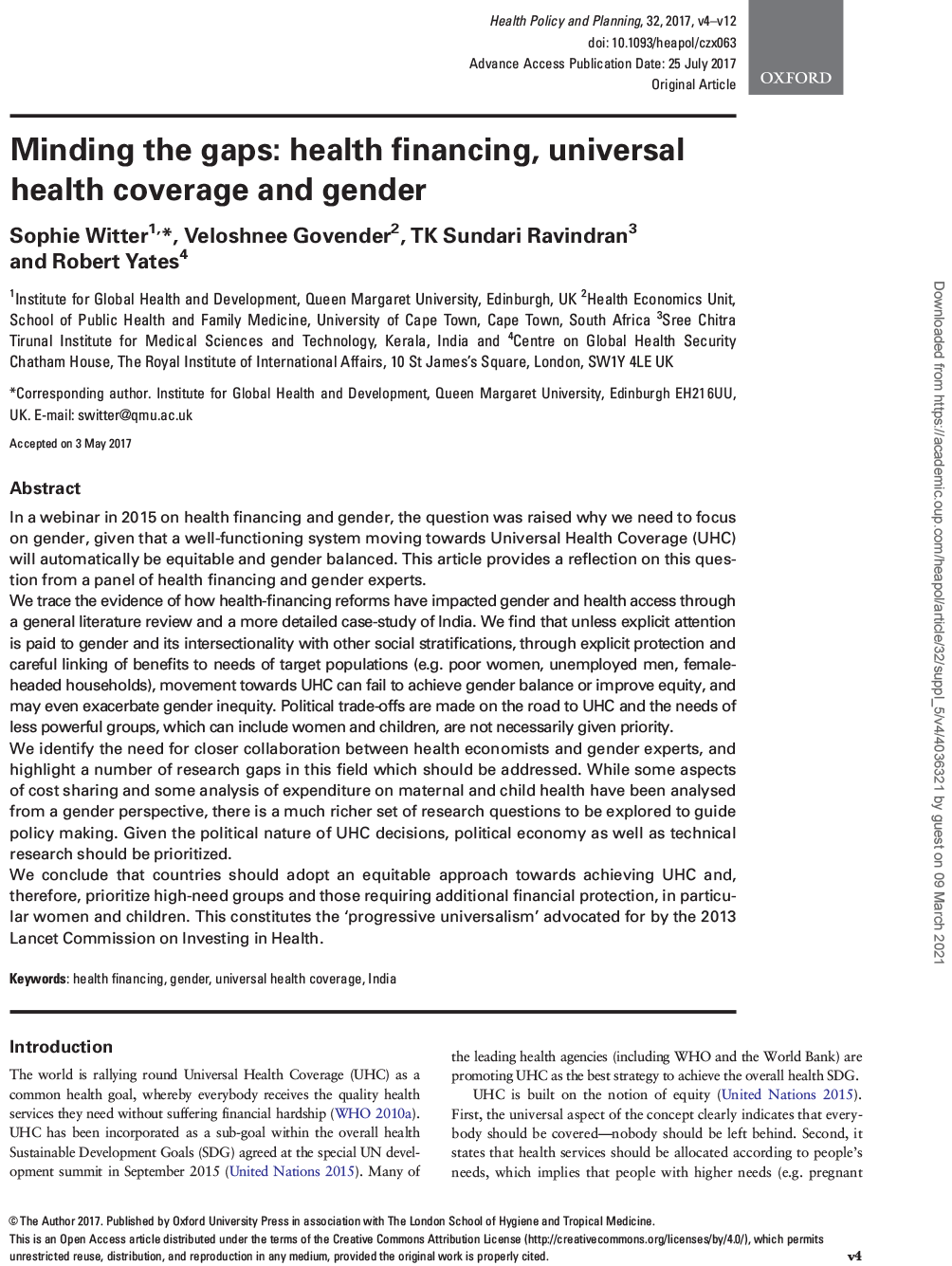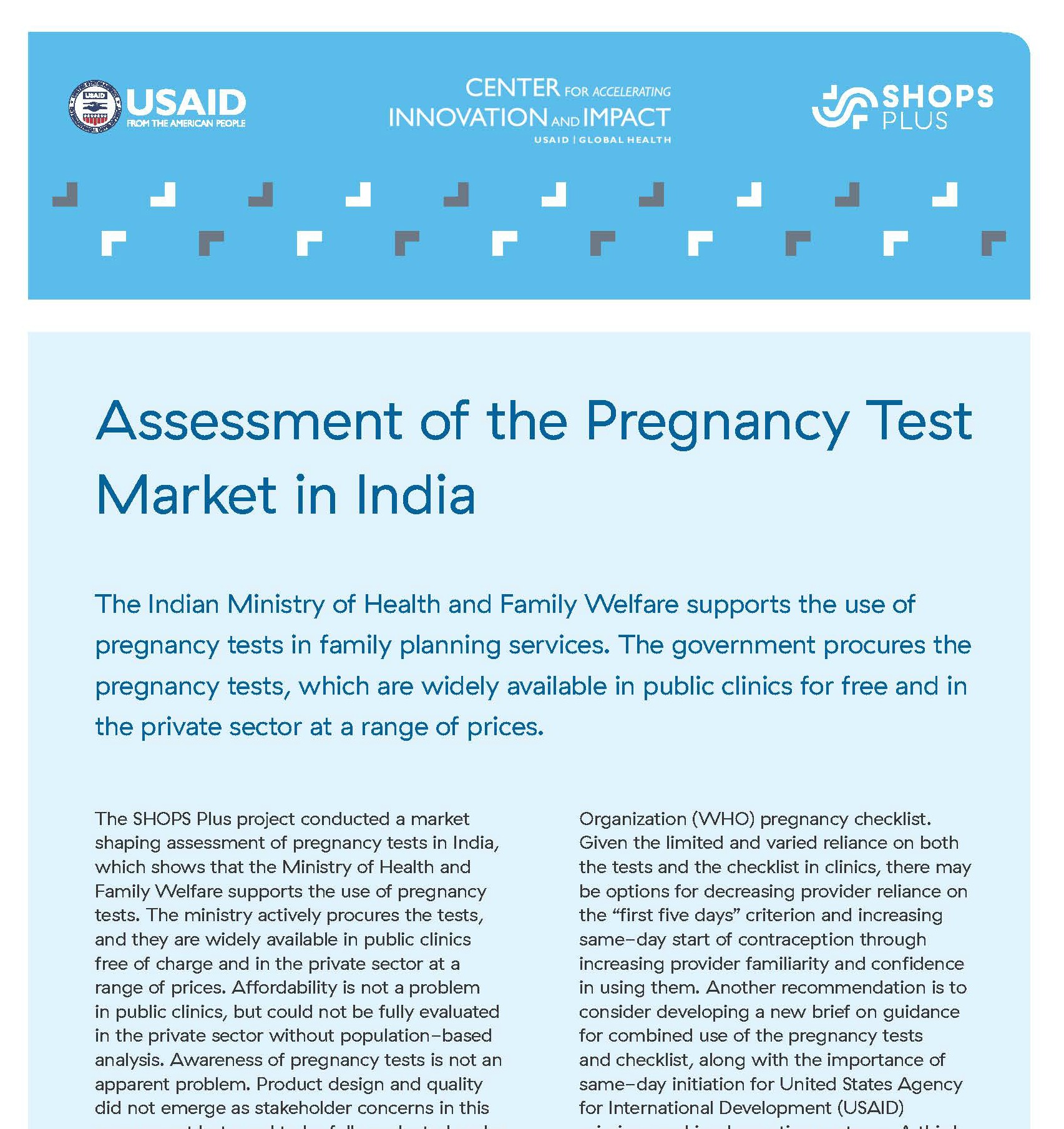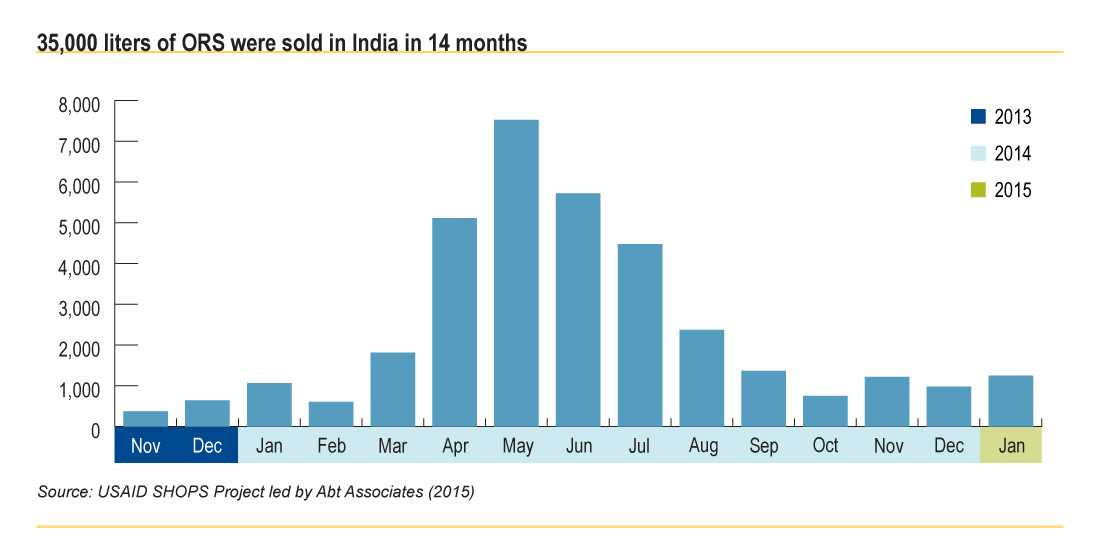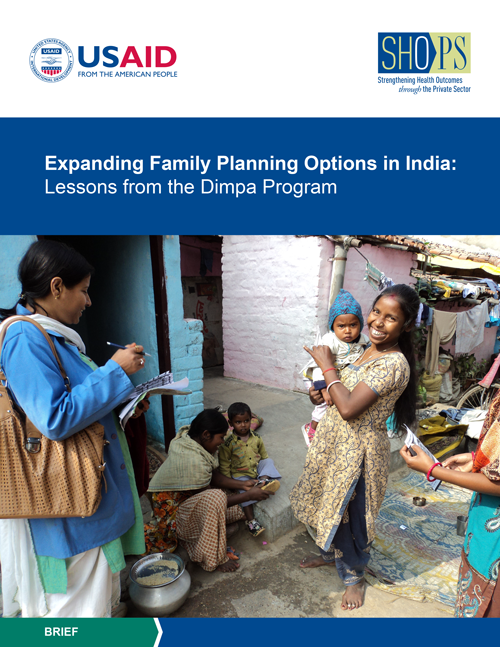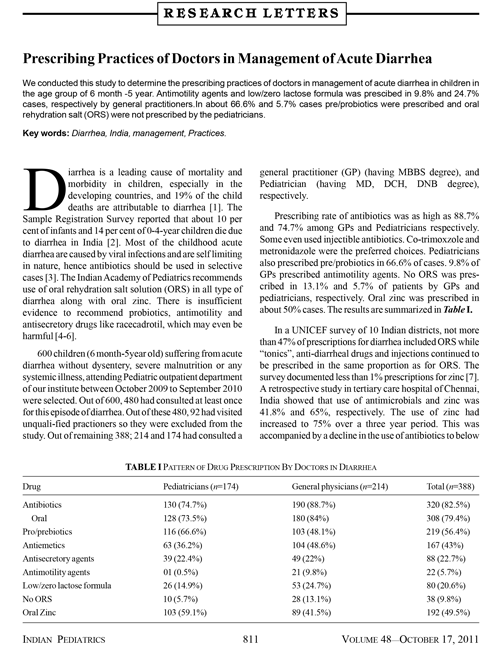
Resource Library
Sources for Sick Child Care in India
The private sector is the dominant source of care in India. Understanding if and where sick children are taken for care is critical to improve case management interventions. This brief presents a secondary analysis of the 2015–16 India Demographic and Health Survey to examine where treatment or advice is sought for sick children who experience at least one of three treatable illnesses: fever, acute respiratory infection, or diarrhea. These illnesses represent some of the leading causes of death in children under five years old.
Resource Type : Brief
Country : India
Year : 2018-07-31T07:00:00
Language : English
Project :

Resource Library
Minding the gaps: health financing, universal health coverage and gender
In a webinar in 2015 on health financing and gender, the question was raised why we need to focus on gender, given that a well-functioning system moving towards universal health coverage (UHC) will automatically be equitable and gender balanced. This article provides a reflection on this question from a panel of health financing and gender experts.
We trace the evidence of how health-financing reforms have impacted gender and health access through a general literature review and a more detailed case-study of India. We find that unless explicit attention is paid to gender and its intersectionality with other social stratifications, through explicit protection and careful linking of benefits to needs of target populations (e.g. poor women, unemployed men, female-headed households), movement towards UHC can fail to achieve gender balance or improve equity, and may even exacerbate gender inequity. Political trade-offs are made on the road to UHC and the needs of less powerful groups, which can include women and children, are not necessarily given priority.
We identify the need for closer collaboration between health economists and gender experts, and highlight a number of research gaps in this field which should be addressed. While some aspects of cost sharing and some analysis of expenditure on maternal and child health have been analysed from a gender perspective, there is a much richer set of research questions to be explored to guide policy making. Given the political nature of UHC decisions, political economy as well as technical research should be prioritized.
We conclude that countries should adopt an equitable approach towards achieving UHC and, therefore, prioritize high-need groups and those requiring additional financial protection, in particular women and children. This constitutes the ‘progressive universalism’ advocated for by the 2013 Lancet Commission on Investing in Health.
Resource Type : Brief
Country : India
Year : 2017-12-01T12:00:00
Language : English
Project :

Resource Library
Assessment of the Pregnancy Test Market in India
The SHOPS Plus project conducted a market shaping assessment of pregnancy tests in India, which shows that the Ministry of Health and Family Welfare supports the use of pregnancy tests. The ministry actively procures the tests, and they are widely available in public clinics free of charge and in the private sector at a range of prices.
Resource Type : Brief
Country : India
Year :
Language : English
Project : SHOPS Plus

Resource Library
India Program Profile
The SHOPS project implemented a three-year program in India, funded by the United States Agency for International Development, from September 2012 to September 2015. The program built on market-based approaches developed and tested in the USAID/India-funded Market-Based Partnerships for Health project. It had three overarching goals: (1) refine and scale up three commercial sector partnership models for improving access to, and use of, health products among base-of-the-pyramid populations; (2) implement an improved tuberculosis treatment model that connects the public and private health sectors with communities; and (3) continue supporting the Dimpa network, scaling up successful and innovative components across the network. This profile presents the goals, components, results, and lessons from the SHOPS program in India.
Resource Type :
Country : India
Year : 2015-12-31T00:00:00
Language : English
Project : SHOPS

Resource Library

A Right to Choice: The Dimpa Story
In India, the USAID-funded SHOPS project implemented an innovative family planning program aimed at increasing the choice of contraceptive methods for poor women. This film gives an overview of the program and features clips from interviews with private health providers and the women they have helped. It also shows the use of a phone-based counseling service that addressed concerns of users of the contraception method known as DMPA, a 3-month injectable. Since the video was produced, the Drug Controller General of India approved its inclusion in the family planning program. The efforts of the SHOPS project and the advocacy groups it partnered with played a critical role in this significant policy change.
Resource Type : Video
Country : India
Year : 2015-12-29T12:00:00
Language :
Project : SHOPS

Resource Library

A Right to Choice: Dimpa and the Careline
In India, the USAID-funded SHOPS project implemented an innovative family planning program aimed at increasing the choice of contraceptive methods for poor women. This two-minute video gives an introduction to the program and features focuses on the use of a phone-based counseling service to address concerns of users of the contraception method known as DMPA, a three-month injectable. Since the video was produced, the Drug Controller General of India approved its inclusion in the family planning program. The efforts of the SHOPS project and the advocacy groups it partnered with played a critical role in this significant policy change.
Resource Type : Video
Country : India
Year : 2015-12-29T00:00:00
Language :
Project : SHOPS

Resource Library
Expanding Family Planning Options in India: Lessons from the Dimpa Program
Twelve years since its initiation, the Dimpa program has created lasting change in the private health sector and achieved significant improvements in access, quality, demand, and use of depot medroxyprogesterone acetate (DMPA) in Uttar Pradesh. Most notably, the program supported the introduction of DMPA in India’s national family planning program. This brief describes approaches, lessons, and results from implementing the Dimpa program. The approaches and lessons have broad relevance to implementers that use a network or social franchising strategy, and to those who aim to promote family planning options.
Resource Type : Brief
Country : India
Year : 2015-11-23T00:00:00
Language : English
Project : SHOPS

Resource Library
Introducing a New FP Method through the Private Sector: The Dimpa Program in India
This presentation examines how SHOPS increased access to depot medroxyprogesterone acetate (DMPA) in India, along with improving quality and increasing continuation. It was presented by Ramakrishnan Ganesan at the SHOPS end-of-project event on June 16, 2015.
Resource Type : Presentation
Country : India
Year : 2015-07-06T00:00:00
Language : English
Project : SHOPS

Resource Library

Advancing Knowledge to Inform Program Design
Minki Chatterji, research director for the SHOPS project, oversees the project’s research portfolio, which includes global research, process and impact evaluations, formative research, provider censuses, and qualitative behavioral research. A demographer by training, she has more than 10 years of experience in global health research, including work on family planning and reproductive health, HIV and AIDS, and maternal and child health. In this video, Chatterji discusses the range of SHOPS research and how the project incorporates its research into its programs.
Resource Type : Video
Country : Bangladesh, Benin, Bolivia, Botswana, Ethiopia, Ghana, Haiti, India, Jamaica, Jordan, Kenya, Madagascar, Malawi, Mali, Namibia, Nepal, Pakistan, Paraguay, Peru, Philippines, Russia, Sénégal, Senegal, South Africa, Tanzania, UAR, Uganda, Zambia, Zimbabwe
Year : 2015-04-15T12:00:00
Language : English
Project : SHOPS

Resource Library
Prescribing Practices of Doctors in Management of Acute Diarrhea
This study was conducted to determine the prescribing practices of doctors in management of acute diarrhea in children in the age group of 6 month -5 year. Antimotility agents and low/zero lactose formula was prescibed in 9.8% and 24.7% cases, respectively by general practitioners. In about 66.6% and 5.7% cases pre/probiotics were prescribed and oral rehydration salt (ORS) were not prescribed by the pediatricians.
Resource Type :
Country : India
Year : 2011-10-17T00:00:00
Language : English
Project : SHOPS
Pagination
- Previous page
- Page 6
- Next page

